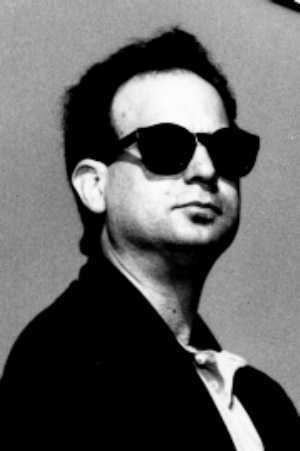Name Carl Stone Role Composer | ||
 | ||
Albums Pict.Soul, Four Pieces, Exusiai, Monogatari: Amino Argot, Kamiya Bar, Mom's Bar-B-Q, Carl Stone 1196, Mom's, Al-Noor Similar People Paul Dresher, Paul DeMarinis, Yoshihide Otomo, Laetitia Sonami | ||
Music director Evolution of the Red Star | ||
Carl stone shing kee
Carl Stone (born Carl Joseph Stone, February 10, 1953) is an American composer, primarily working in the field of live electronic music. His works have been performed in the United States, Canada, Europe, Asia, Australia, South America, and the Near East.
Contents
- Carl stone shing kee
- Ear meal with carl stone
- Solo recordings
- Some unreleased recordings
- Other released collaborations
- Other commissioned works
- Listening
- References

Stone studied composition at the California Institute of the Arts with Morton Subotnick and James Tenney and has composed electro-acoustic music almost exclusively since 1972. As an undergrad at CalArts, he had a work-study job in the Music Library, which had many thousands of LP records in the circulating collection (this was 1973). The collection included a lot of western classical music of course but also a really comprehensive world music collection, avant-garde, electronic music, jazz and more. Because the librarians were concerned that the LPs, many of which were rare, would soon become unlistenable at the hands of the students and faculty, his job was to take every disc and record it onto cassette, a kind of back-up operation. He soon discovered that he could monitor the output of any of the recordings he was making and even mix them together without disturbing the recordings. So, he began to experiment, making musical collages, and started to develop habits of combining disparate musical materials. In addition to his composition and performance schedule, he is a faculty member in the Department of Information Media, School of Information Science and Technology at Chukyo University in Japan.
Stone utilizes a laptop computer as his primary instrument and his works often feature very slowly developing manipulations of samples of acoustic music, speech, or other sounds. Because of this, as well as his preference for tonal melodic and harmonic materials similar to those used in popular musics, Stone's work has been associated with the movement known as minimalism.
Prior to his settling on the laptop, in the 1980s, he created a number of electronic and collage works utilizing various electronic equipment as well as turntables. Prominent works from this period include Dong Il Jang (1982) and Shibucho (1984), both of which subjected a wide variety of appropriated musical materials (e.g. Okinawan folk song, European Renaissance music, 1960s Motown, etc.) to fragmentation and looping. In this way his work paralleled innovations being made in the early days of rap and hip hop (e.g. Grandmaster Flash, of whose work he was unaware at the time). It was during this period that he began naming many of his works after his favorite restaurants (often Asian ones).
His first residency in Japan, sponsored by the Asian Cultural Council, was from November 1988 to April 1989. While living in Tokyo he collected more than 50 hours of recordings of the city's urban soundscape, which he later used as the basis for his radio composition Kamiya Bar, sponsored by Tokyo FM radio, and released on a CD of the same name by the Italian label NewTone / Robi Droli.
Stone has collaborated frequently with Asian performers, including traditional instrumentalists such as Min Xiao-Fen (pipa), Yumiko Tanaka (shamisen), Kazue Sawai (koto), Michiko Akao (ryuteki), and those working with modern instruments, such as Otomo Yoshihide (turntables, guitar), Kazuhisa Uchihashi (guitar, daxophone), Yuji Takahashi (computer, piano), and vocalists such as Reisu Saki and Haco. He has also collaborated on an album with Hirohito Ihara's Radicalfashion and recently with Alfred Harth who partly lives in Korea.
Beginning in the early years of the 21st century, Stone began to compose more frequently for acoustic instruments and ensembles, completing a new work for the San Francisco Bay Area-based American Baroque.
Stone served as president of the American Music Center from 1992 to 1995, and was director of Meet the Composer/California from 1981 to 1997. He also served as music director of KPFK-FM in Los Angeles from 1978 to 1981.
For many years, Stone has divided his time between San Francisco and Japan.
Stone received a 1999 Foundation for Contemporary Arts Grants to Artists Award.
Ear meal with carl stone
Solo recordings
Al Noor (2007) – Explorations into the dismantling and re-composition of global song and melody
Nak Won (2002) – Real-time music for lap-top computer
Resonator (2002) – Soundtrack for the works of sculptor Seiji Kunishima
Exusiai (1998, released 1999) – Music for contemporary dancer Akira Kasai
em:t 1196 (1996) – The musical part of a three-way collaboration between the composer, dancer Kuniko Kisanuki and sculptor Satoru Shoji
Kamiya Bar (1995) – Excerpts from a sound collage assembled in 1992 from TV commercials and field recordings made in Tokyo in the late 1980s
Mom’s (1992)
Four Pieces (1989) – Playful explorations and transformations for Macintosh computer
Wave-Heat (1983) – Piece for digital delay/harmonizer and an LP record; released on audio cassette
Woo Lae Oak (1981, released 1983; re-issued 2008 as a single continuous track) – A concrete symphony for the tremolo of a rubbed string and the tone of a blown bottle
Some unreleased recordings
Other released collaborations
Pict.soul (2000–2001) – Long-distance collaboration with Tetsu Inoue
Monogatari: Amino Argot (1994) – Long-distance collaboration with Otomo Yoshihide
Over-Ring-Under (1992) – Soundtrack to a videogame CD-ROM, with visual artist Teckon
